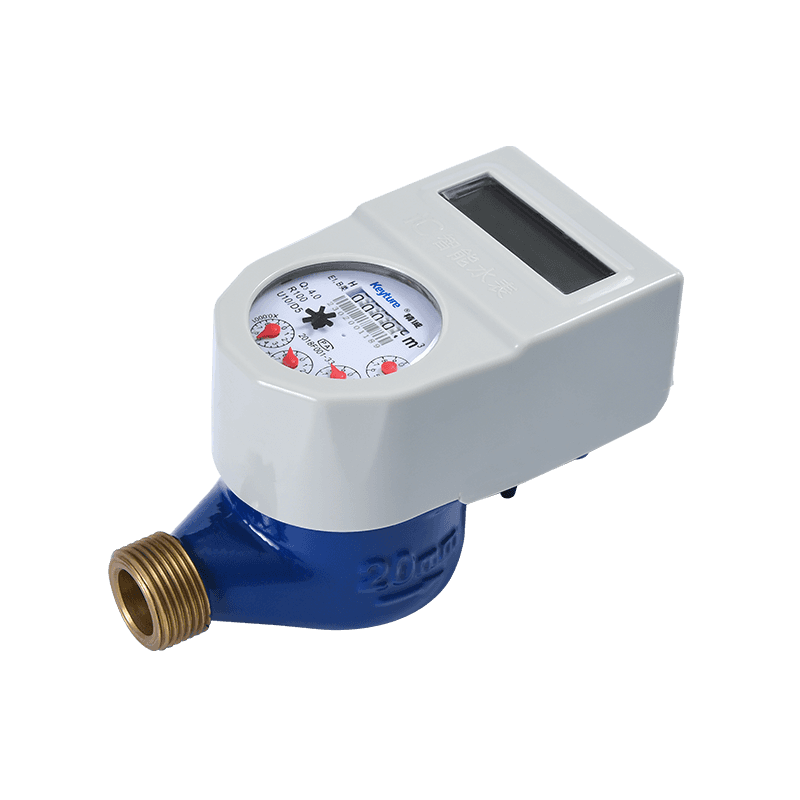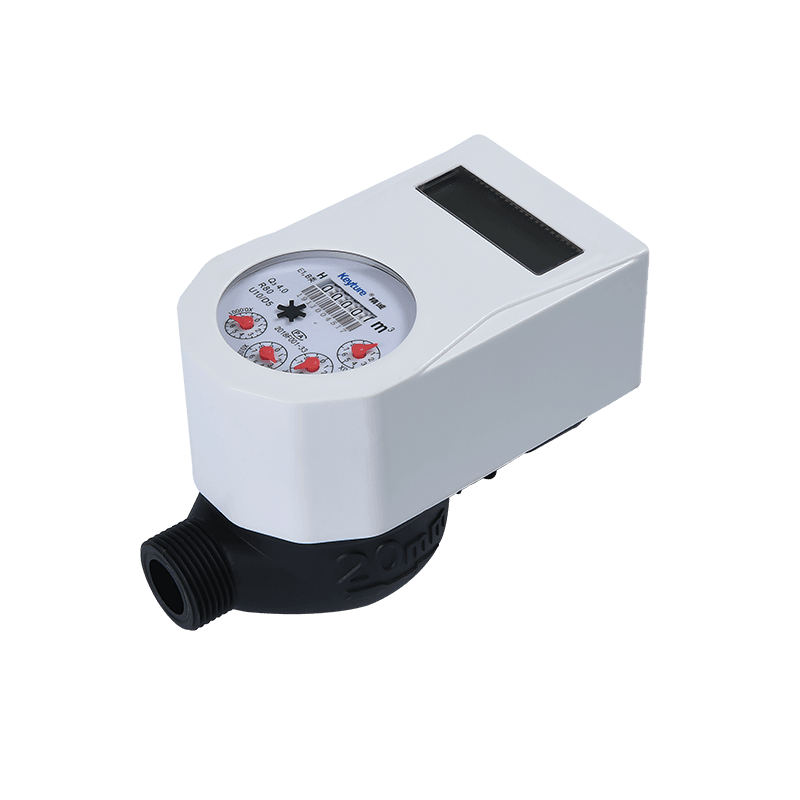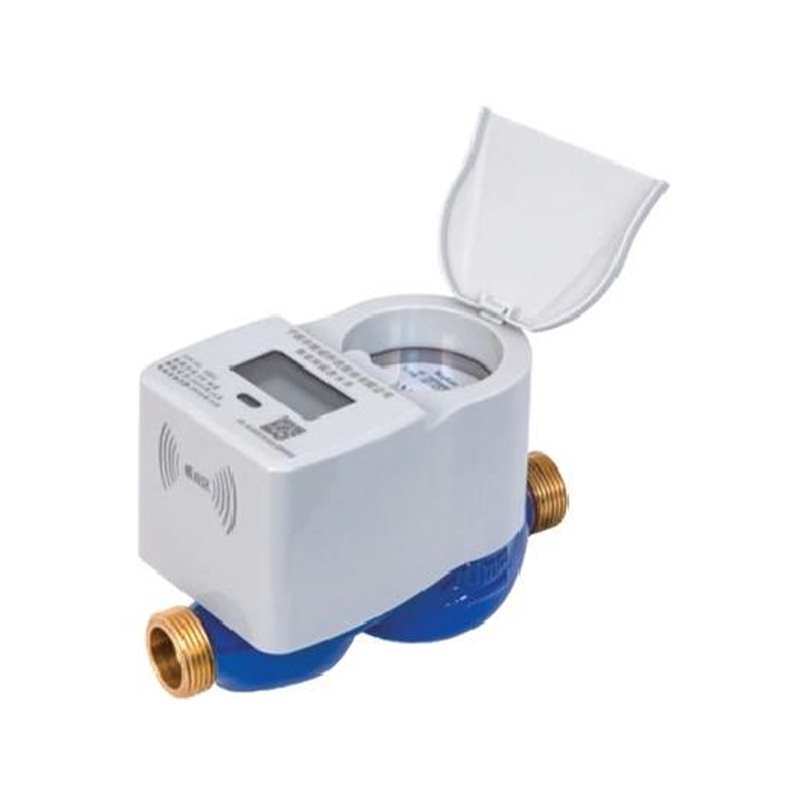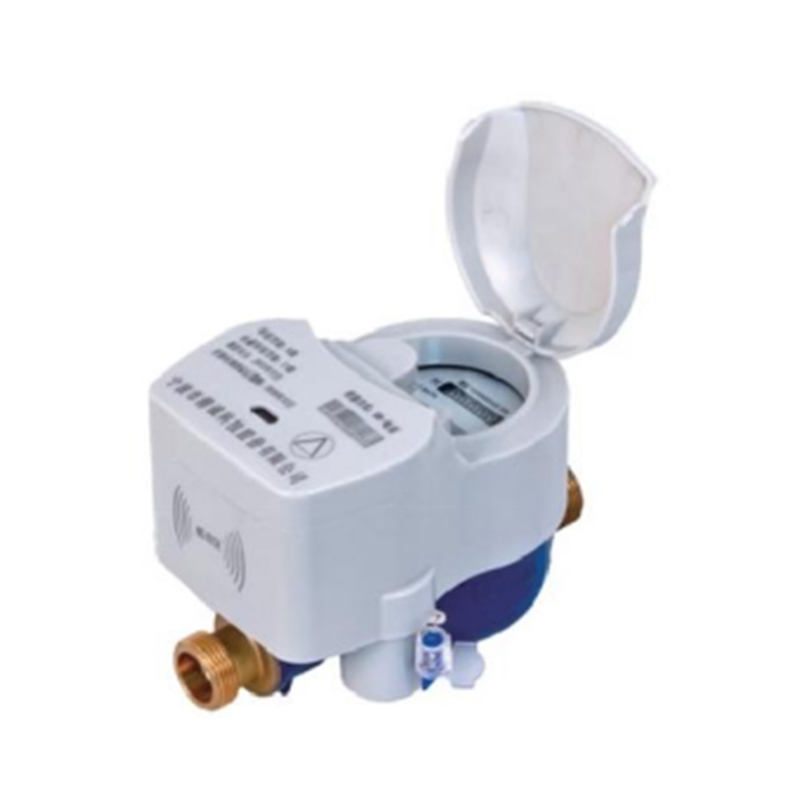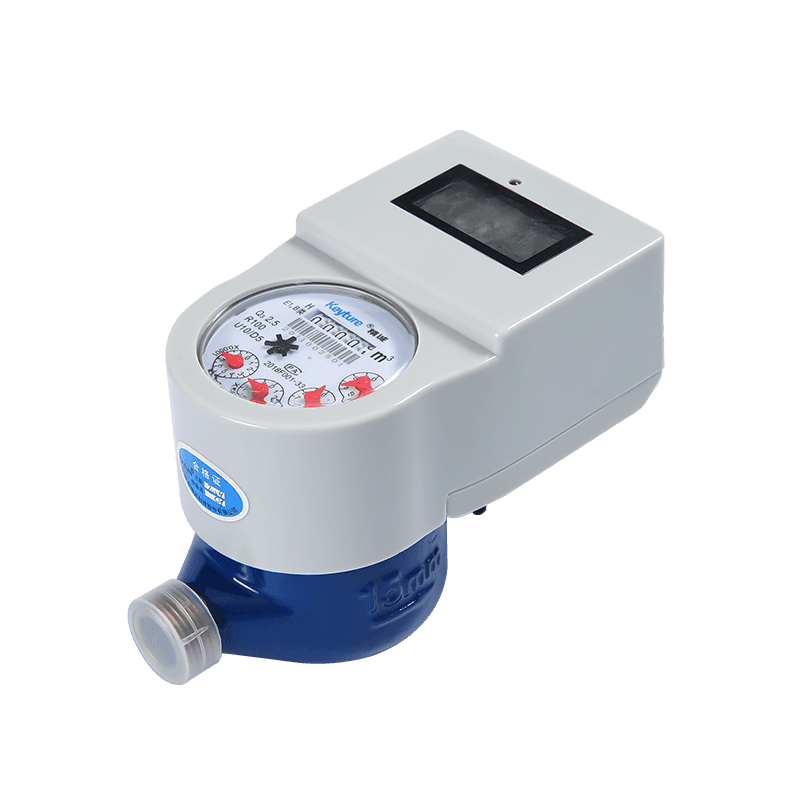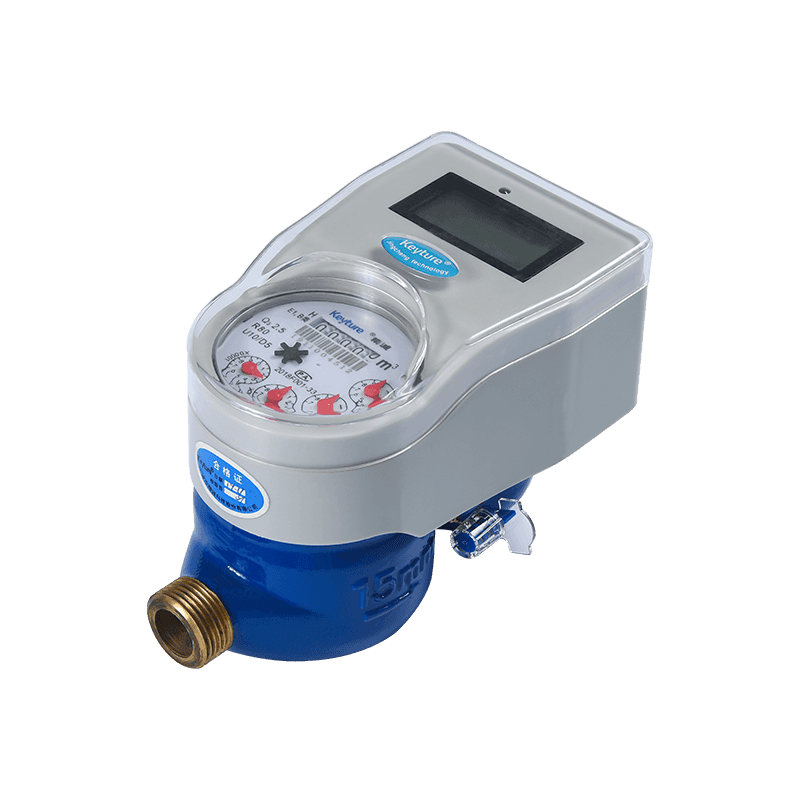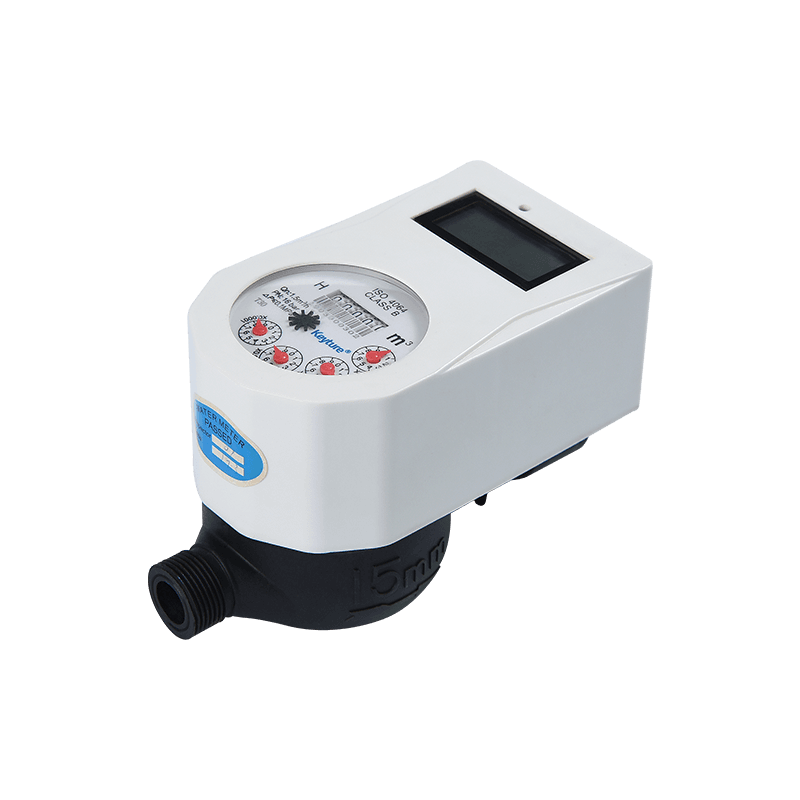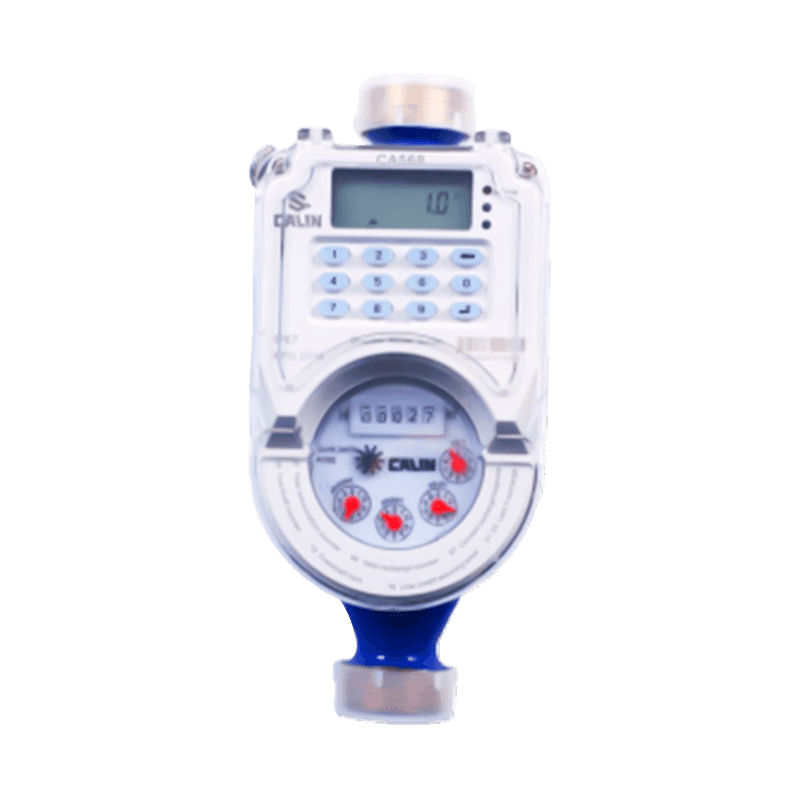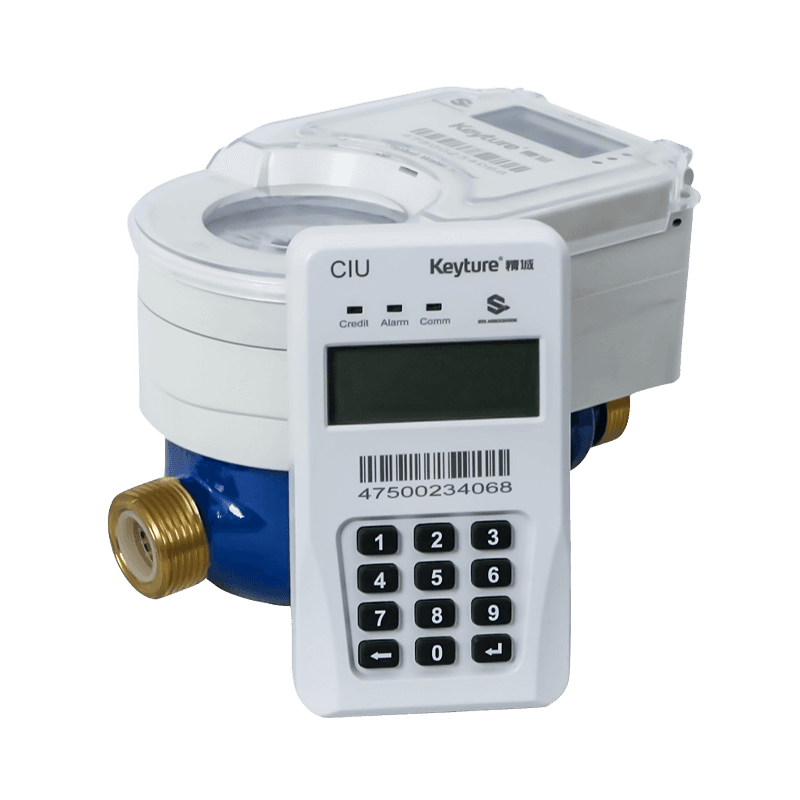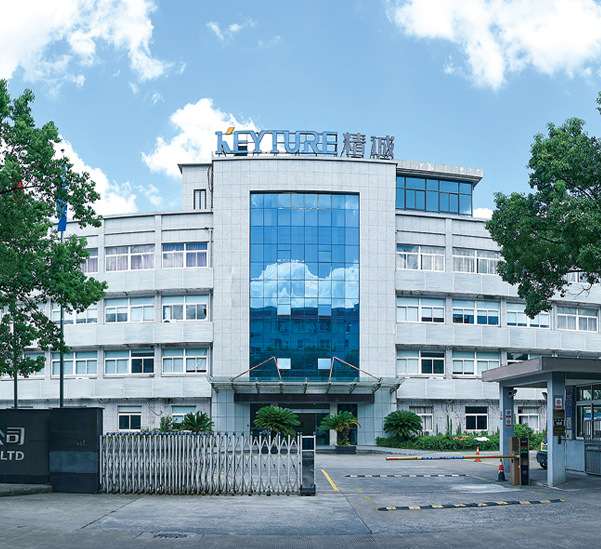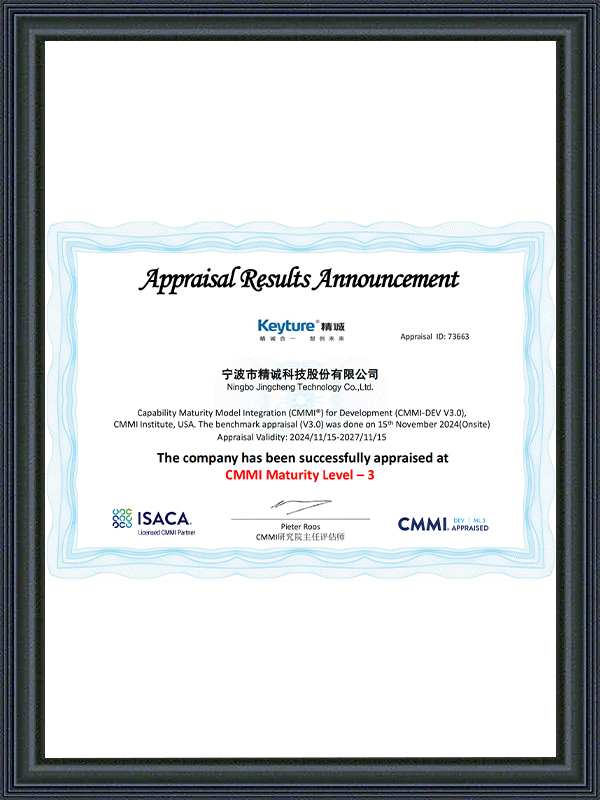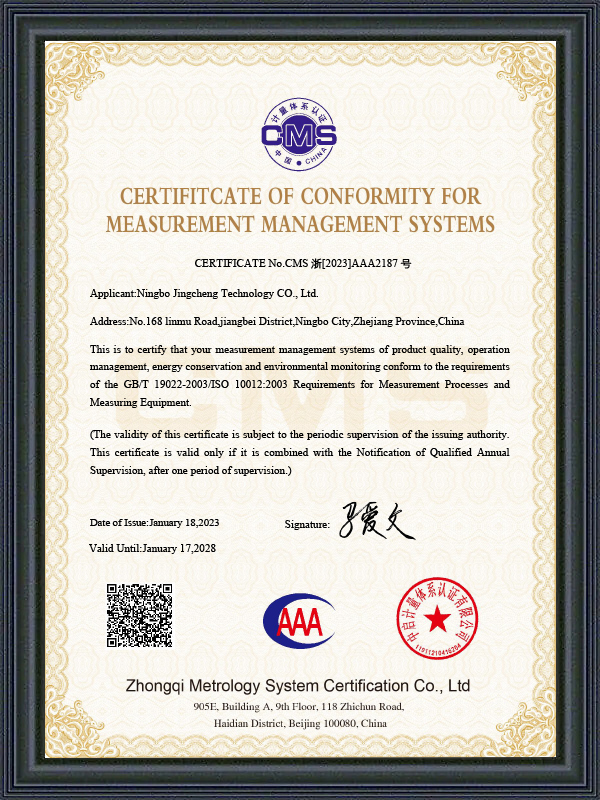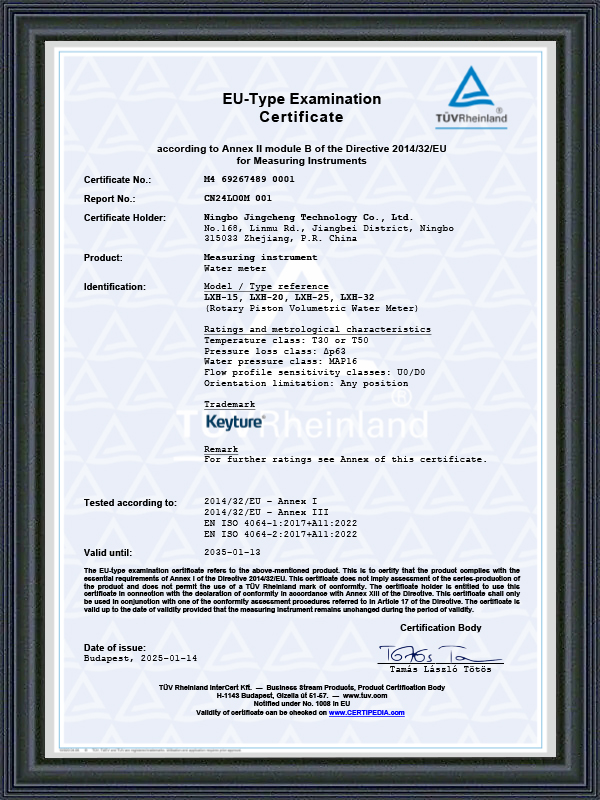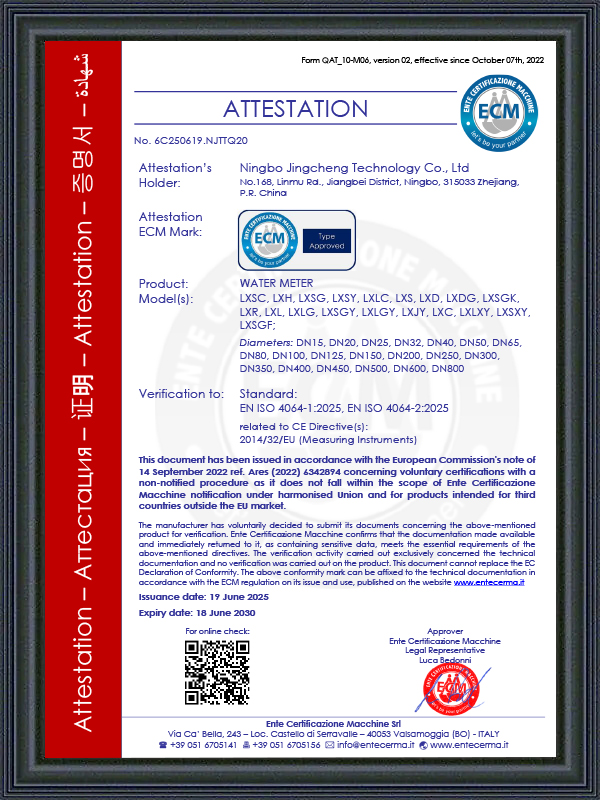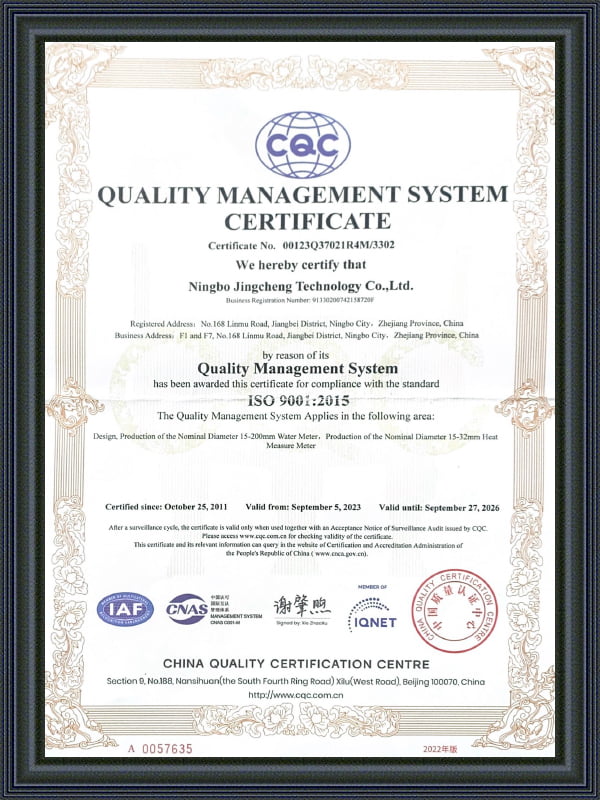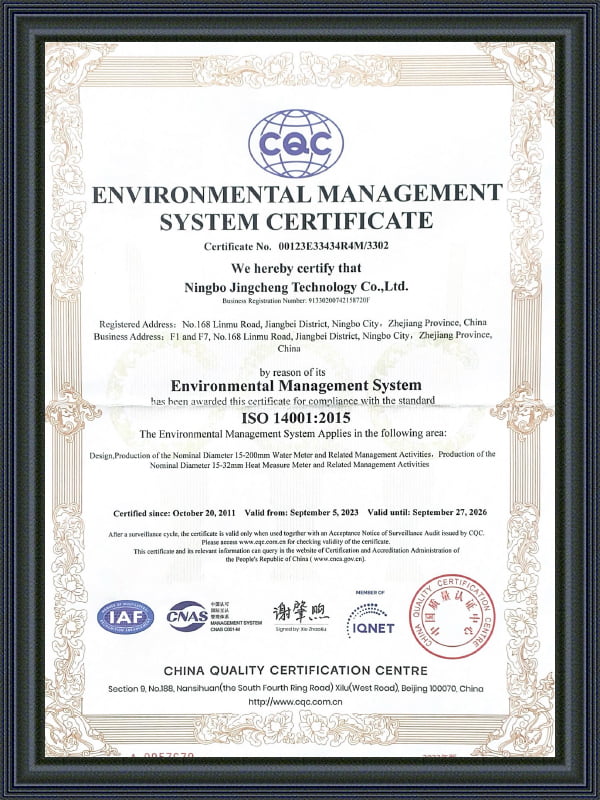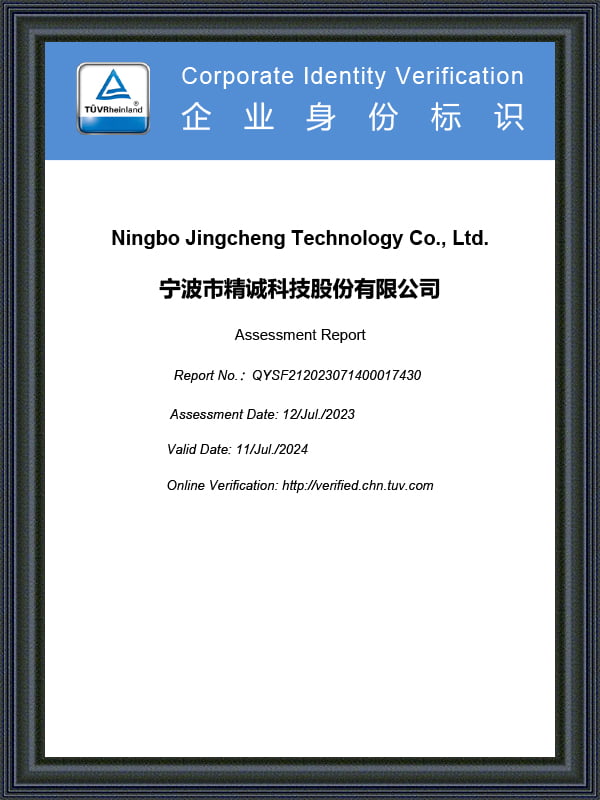Advantages of prepaid water meter
In the context of smart city construction and water resource management being increasingly valued, prepaid water meters have gradually become an important development direction of the water meter industry with their significant advantages. As a leader in China's water meter manufacturing field, Ningbo Jingcheng Technology Co., Ltd. relies on its deep accumulation and continuous innovation in prepaid water meter technology to provide efficient, convenient and environmentally friendly water resources management solutions to global customers.
Intelligent management to improve operational efficiency
By integrating IC card technology or remote communication technology, prepaid water meters enable users to prepay and manage water bills. Users can recharge through card swiping or online platforms to easily obtain the corresponding water consumption. This model not only simplifies the manual meter reading and billing process of traditional water meters, but also significantly reduces the operating costs of property management companies. Ningbo Jingcheng Technology’s prepaid water meter series, such as IC card smart water meters and remote control water meters, all have advanced functions such as remote meter reading, real-time monitoring and data analysis, providing managers with comprehensive water data support to facilitate timely identification and resolution Water problems, thereby improving management efficiency.
Promote water conservation awareness and achieve sustainable development
Prepaid water meters adopt the "pay first and use later" model, which effectively enhances users' awareness of water conservation. Before using water, users need to pre-charge. When the account balance is insufficient, the water meter will automatically turn off the water supply to avoid wastage of water resources. This mechanism subtly cultivates users' water-saving habits and promotes the sustainable use of water resources. Ningbo Jingcheng Technology's prepaid water meters fully consider water-saving factors during the design process, and ensure the rational utilization of every drop of water through precise metering technology and intelligent control functions.
Improve service quality and enhance user satisfaction
The widespread application of prepaid water meters has significantly improved the service quality of property management. Through remote monitoring and data analysis, property management companies can quickly discover and solve users' problems in the water use process, such as water pipe leaks or insufficient water pressure, thereby improving service response speed and improving user satisfaction. For users, prepaid water meters provide a more convenient and transparent water management method. Users can check their water usage and account balance at any time to avoid the inconvenience caused by forgetting to pay.
Comply with international standards to ensure product quality and safety
Ningbo Jingcheng Technology's prepaid water meters strictly follow the international ISO4064 B, C and D standards to ensure the reliability of the product in terms of quality and accuracy. The company has passed ISO9001:2015 quality management system, ISO14001:2015 environmental management system and ISO45001:2018 occupational health and safety management system certification, and established a complete quality control and operation management system. Every step from raw material procurement to product delivery is subject to strict inspection and testing to ensure that the products meet the highest standards. This persistent pursuit of quality has not only won the trust and praise of customers at home and abroad, but also laid a solid foundation for the company's long-term development.
How Prepaid Water Meters Work
Prepaid water meters are an innovative solution designed to help both consumers and utilities manage water consumption efficiently. Unlike traditional postpaid meters, prepaid meters require users to pay for water before usage, giving them better control over their consumption and reducing the risk of overdue bills. Technology Behind Prepaid Water Meters Prepaid water meters can be mechanical, electronic, or smart. Each type uses different technology to track water usage and deduct consumed units from the prepaid balance. Modern electronic and smart meters often integrate with IoT platforms and digital systems, allowing for remote monitoring, alerts, and advanced analytics.
The Process
- Purchasing Credit – Consumers buy water credits through various channels such as online portals, mobile apps, vending machines, or physical cards.
- Meter Activation – Once credits are purchased, they are loaded into the meter via a smart card, token, or digital code.
- Water Usage – The meter deducts water consumption from the prepaid balance. When the balance runs low, the meter alerts the user or automatically stops water flow, depending on the model.
Top-Up Methods
- - Online or Mobile Apps: Convenient for remote top-ups and often integrated with payment platforms.
- - Physical Points: Tokens, smart cards, or scratch cards purchased from authorized vendors.
- - Automatic Recharge: Some smart meters allow automatic recharge via linked accounts, minimizing interruptions.
Key Advantages of the Process
- - Transparent consumption tracking
- - Reduced billing errors
- - Early leak detection in some smart models
- - Encourages responsible water usage
Benefits of Prepaid Water Meters
1. Benefits for Consumers
a. Budgeting and Controlling Water Consumption
Prepaid water meters allow consumers to pay for the water they intend to use, giving them full control over their water expenses. By monitoring usage, households can avoid unexpected high bills and better manage monthly budgets.
b. Avoiding Unexpected High Bills
Since water is prepaid, there’s no risk of accumulating unpaid bills. Consumers know exactly how much they have spent and how much water remains available.
c. Early Leak Detection and Alerts
Advanced electronic and smart prepaid meters, such as those manufactured by NINGBO JINGCHENG TECHNOLOGY CO., LTD., offer features like real-time water flow monitoring. When unusual consumption patterns occur, the system can alert users to potential leaks.
Parameters often include:
- - Flow rate thresholds: Meters can trigger alerts if flow exceeds normal usage patterns.
- - Low balance warnings: Visual or audio alerts when credit runs low.
d. Reduced Risk of Debt Accumulation
Prepaid meters inherently prevent overuse without payment, protecting consumers from debt related to water bills.
2. Benefits for Water Utilities
a. Improved Revenue Collection
Prepaid meters minimize billing issues and late payments by requiring upfront payment. Utilities can better forecast revenue and reduce administrative overhead.
b. Reduced Non-Revenue Water (NRW)
Water lost through leaks, theft, or meter inaccuracies can be significant. Prepaid meters, especially smart models from NINGBO JINGCHENG TECHNOLOGY CO., LTD., provide accurate measurements, reducing non-revenue water.
Typical parameters to monitor:
- - Meter accuracy: ISO4064B, C, D grade compliance ensures precise readings.
- - Leak detection sensitivity: Smart meters can detect minimal leaks (~0.5–1 L/hour).
c. Lower Operational Costs
With remote reading capabilities, utilities save costs on meter reading and billing.
Parameters include:
- -Remote data collection intervals: Hourly, daily, or real-time.
- -Data storage: Historical consumption data helps optimize operations.
d. Better Demand Management and Resource Conservation
By tracking consumption patterns, utilities can manage supply more effectively and encourage responsible water usage among consumers.
e. Enhanced Customer Service Through Transparency
Utilities can provide real-time consumption data and alerts to consumers, improving trust and satisfaction. Integrating meters from a trusted manufacturer like NINGBO JINGCHENG TECHNOLOGY CO., LTD., which has over 22 years of experience in smart water meters, ensures reliable performance and robust service support.
Types of Prepaid Water Meters
Mechanical Prepaid Water Meters Description and Working Principle:
Mechanical prepaid water meters use a physical token or card system to control water flow. The meter deducts units from the prepaid token as water passes through, and water flow stops when the credit is depleted.
Advantages:
- - Simple operation and easy to install
- - Low maintenance requirements - Reliable in areas without electricity
Disadvantages:
- - Limited functionality (no remote monitoring or data analytics)
- - Requires physical interaction for top-ups - Less precise in measuring very low flows
Key Parameters:
| Parameter | Typical Range / Value | Notes |
|---|---|---|
| Accuracy | ±2% to ±5% | Varies by model and ISO grade |
| Flow Rate | 0.5–30 m³/h | Depends on pipe size |
| Operating Pressure | 0.1–1.6 MPa | Must match local water supply conditions |
| Temperature Range | 0–50°C | Suitable for potable water |
NINGBO JINGCHENG TECHNOLOGY CO., LTD., located in Jiangbei Investment Park, NINGBO, China, manufactures a variety of mechanical water meters including single-jet and multi-jet types. With ISO4064B, C, D grade certification, these meters ensure reliable performance for traditional prepaid applications.
2. Electronic Prepaid Water Meters Description and Working Principle:
Electronic prepaid water meters measure water consumption digitally. They use an internal microprocessor to track usage and deduct credit. Some models allow remote top-ups via smart cards or digital codes, and they can provide alerts for low balance or abnormal flow.
Advantages:
- - Higher accuracy and reliability than mechanical meters
- - Remote top-up capability
- - Can detect leaks and abnormal consumption patterns
Disadvantages:
- - Requires electricity or battery operation
- - Higher initial cost than mechanical meters
Key Parameters:
| Parameter | Typical Range / Value | Notes |
|---|---|---|
| Accuracy | ±1% to ±2% | ISO4064 C/D grade certified |
| Flow Rate | 0.2–30 m³/h | Suitable for residential and commercial |
| Operating Pressure | 0.1–1.6 MPa | Compatible with standard water networks |
| Battery Life | 3–5 years | Depending on usage and model |
| Communication | Infrared, RF, or GSM | For data transfer and top-ups |
NINGBO JINGCHENG TECHNOLOGY CO., LTD. offers electronic prepaid water meters including IC card intelligent meters and remote control models. With over 22 years of R&D experience, the company ensures long-lasting performance, high accuracy, and reliable data collection.
3. Smart Prepaid Water Meters Description and Working Principle:
Smart prepaid water meters integrate with IoT platforms and smart grids, allowing real-time monitoring, remote control, and advanced data analytics. They can send alerts via mobile apps or cloud dashboards, making them ideal for modern smart homes and utility management.
Advantages:
- - Real-time monitoring of consumption - Leak detection and predictive alerts
- - Remote credit top-up and water control
- - Supports integration with smart home and utility systems
Disadvantages:
- - Higher upfront cost
- - Requires network connectivity for full functionality
Key Parameters:
| Parameter | Typical Range / Value | Notes |
|---|---|---|
| Accuracy | ±1% | ISO4064 D grade certified |
| Flow Rate | 0.1–40 m³/h | Suitable for residential, commercial, industrial |
| Operating Pressure | 0.1–1.6 MPa | Matches standard water distribution |
| Communication | LoRa, NB-IoT, GSM, RF | Real-time data and remote control |
| Battery Life / Power | 5–8 years / mains powered | Long-term operation |
| Smart Features | Leak alerts, historical data, usage trends | Supports water conservation and planning |
NINGBO JINGCHENG TECHNOLOGY CO., LTD. specializes in smart prepaid water meters, including optoelectrical reading direct remote control meters and ultrasonic water meters. The company combines cutting-edge IoT technology with strict ISO9001:2015 quality management standards, ensuring meters deliver accurate readings, long lifespan, and seamless integration with modern utility systems.
Installation and Maintenance of Prepaid Water Meters
Step-by-Step Guide to Installing a Prepaid Water Meter
Step 1: Site Assessment
- - Determine the optimal meter location considering accessibility, exposure to sunlight, and risk of freezing.
- - Ensure that the pipe section is compatible with the meter size and type.
Step 2: Shut Off Water Supply
- - Turn off the main water supply to avoid leakage during installation.
Step 3: Prepare the Pipe
- - Clean the pipe ends and remove any debris.
- - Measure the pipe diameter to select a meter that fits properly.
Step 4: Install the Meter
- - Insert the meter in the correct orientation according to flow direction indicated on the device.
- - Secure with appropriate fittings and gaskets to prevent leaks.
Parameter Check:
| Parameter | Recommended Value / Standard | Notes |
|---|---|---|
| Pipe Diameter Compatibility | DN15–DN50 | Matches most residential & commercial systems |
| Operating Pressure | 0.1–1.6 MPa | Standard for potable water |
| Temperature Range | 0–50°C | Ensure compatibility with local water temperature |
Step 5: Connect Power / Communication (for Electronic & Smart Meters)
- - Connect battery or mains supply for electronic meters.
- - Configure communication modules (RF, LoRa, NB-IoT, or GSM) for smart meters.
Step 6: Meter Activation and Testing
- - Load prepaid credit through IC card, digital token, or online top-up system.
- - Open water supply gradually and check for leaks.
- - Confirm meter registers consumption correctly and deducts credit accurately.
Important Considerations During Installation
- - Meter Location: Avoid direct sunlight, heavy vibrations, or areas prone to flooding.
- - Pipe Compatibility: Confirm diameter, material, and flow direction match the meter specifications.
- - Pressure and Flow Ratings: Ensure the meter’s maximum operating pressure (0.1–1.6 MPa) and flow rate match system requirements.
- - Accessibility for Maintenance: Leave enough space around the meter for future servicing.
- - Regulatory Compliance: Follow local water regulations and ISO standards (ISO4064 B, C, D) for meter accuracy and safety.
NINGBO JINGCHENG TECHNOLOGY CO., LTD. emphasizes compliance with ISO9001:2015 quality management, ISO14001:2015 environmental standards, and ISO45001:2018 occupational safety, ensuring every installation meets global regulatory and operational standards.
Routine Maintenance Tips
- - Inspect meters periodically for leaks or damage.
- - Clean mechanical components to prevent debris interference.
- - Check battery levels on electronic and smart meters; replace as needed.
- - Verify accuracy using standardized test procedures at least annually.
- - Update firmware for smart meters to maintain IoT functionality and security.
Troubleshooting Common Issues
| Issue | Possible Cause | Solution |
|---|---|---|
| Meter not registering consumption | Blockage or misalignment | Check flow path, reinstall meter if necessary |
| Credit not updating | Incorrect card/token or communication failure | Re-enter credit, verify communication setup |
| Water flow stopped unexpectedly | Prepaid balance depleted | Recharge meter |
| Abnormal readings | Leak, meter malfunction, or calibration drift | Inspect for leaks, recalibrate or replace meter |
Key Considerations Before Switching to Prepaid Water Meters
Regulatory and Policy Frameworks Before implementing prepaid water meters, it is crucial to understand the local regulations and policies governing water utilities, meter installation, and billing practices. Compliance ensures smooth operation and avoids legal issues.
Key Points:
- - Check national or regional water metering standards (e.g., ISO4064 B, C, D).
- - Ensure alignment with water tariffs and billing regulations for prepaid systems.
- - Obtain necessary permits for smart meter communication if using IoT-based systems.
NINGBO JINGCHENG TECHNOLOGY CO., LTD., located in Jiangbei Investment Park, NINGBO, China, has been producing water meters for over 22 years and designs products to meet international standards and regulatory requirements. Their meters, including IC card, remote control, and ultrasonic smart meters, are certified and compliant, simplifying regulatory approval for utilities.
2. Consumer Awareness and Education
Switching to prepaid water meters requires educating consumers to ensure proper usage and acceptance. Without awareness, users may struggle with top-ups, reading balances, or responding to alerts.
Key Points:
- - Provide clear instructions on credit purchase and meter operation.
- - Educate consumers on reading consumption data and responding to alerts.
- - Promote understanding of water conservation benefits associated with prepaid meters.
NINGBO JINGCHENG TECHNOLOGY CO., LTD. supports utilities and consumers with detailed manuals, technical guidance, and training. Their goal is to ensure that all meter types—from mechanical to smart IoT models—are user-friendly, transparent, and support responsible water usage.
3. Data Privacy and Security Concerns
Smart prepaid water meters collect detailed consumption data. Protecting this data is critical to maintain trust and comply with privacy regulations.
Key Points:
- - Use encrypted communication protocols (LoRa, NB-IoT, GSM) to prevent unauthorized access.
- - Ensure cloud and local storage comply with data privacy standards.
- - Provide consumers with control over access to their data.

